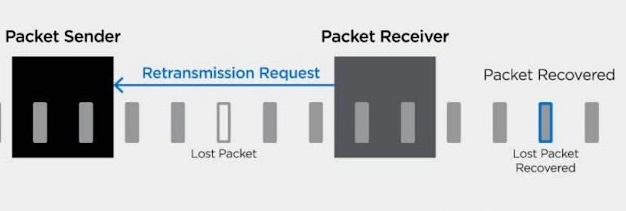In networking, a packet is a small segment of a larger message. Data sent over a computer network, such as the Internet, is divided into packets. These packets are received by the computer or device by reconnection.
Suppose a user needs to load an image. The image file doesn't go from a web server to the user's computer in one piece. Instead, it is broken down into packets of data and then received by the user's computer in the original picture.
A network is a group of two or more connected computers. There are many networks around the world which are all interconnected with each other.
What is the use of Packet?
Theoretically, it may be possible to send files and data over the Internet without chopping it up into smaller packets of information. One computer can send data to another computer in the form of long unbroken lines of bits.
However, when more than two computers are involved, such an approach becomes impractical. Because long lines of bits pass through the wires between two computers, a third computer cannot use the same wires to send information—it must wait its turn.
In contrast, the Internet is a "packet switching" network. Packet switching refers to the ability of networking equipment to process packets independently of each other.
It also means that packets can take different network paths to the same destination. (In some protocols, packets are required to arrive at their final destination in the correct order, even if each packet took a different route to get there.)
Due to packet switching, packets from multiple computers can travel over the same wires in basically any order. This enables multiple connections to be taken at the same time on the same networking equipment. As a result, billions of devices can exchange data over the Internet instead of just a handful.
What is Packet Header?
A packet header is a "label" of sorts, which provides information about the contents, origin, and destination of a packet. All network packets include a header so that the device that receives them knows where the packets come from, what they are for, and how to process them.
The packet consists of two parts:
Header and payload
The header contains information about the packet, such as its origin and destination IP addresses (an IP address is like a computer's mailing address). Payload is the actual data. Going back to the photo example, there is a payload among the thousands of packets that make up the image, and the payload contains a small piece of the image.
Where do Packet Headers come from?
Packets actually have more than one header and each header is used by a different part of the networking process. Packet headers are attached by some types of networking protocols.
A protocol is a standardized way of formatting data so that any computer can interpret the data. Many different protocols make the Internet work. Some of these protocols add headers to packets with information associated with that protocol. Most packets that move over the Internet include a Transmission Control Protocol (TCP) header and an Internet Protocol (IP) header.
What are Packet Trailer and Footer?
Packet headers go at the front of each packet. The router, switch, computer that processes or receives a packet will first look at the header. A packet may also have a trailer and footer attached to the end. Like headers, they contain additional information about the packet.
Only some network protocols attach a trailer or footer to the packet; Most only append headers. ESP is an example of a network layer protocol that adds trailers to packets.
What is IP Packet?
IP (Internet Protocol) is a network layer protocol used for routing. It is used to ensure that packets reach the correct destination.
Packets are sometimes defined by the protocol they are using. A packet containing an IP header may be referred to as an "IP Packet". The IP header contains important information about where a packet is from (its source IP address), where it is going (destination IP address), how large the packet is, and how long it will persist on a network router before being dropped.
It happens It may also indicate whether or not the packet may be fragmented and include information on how to retransmit fragmented packets.
Packet Vs Datagram
A "datagram" is a segment of data sent over a packet-switched network. A datagram contains enough information to be transferred from the source to its destination. By this definition, an IP packet is an example of a datagram. Essentially, datagram is an alternate term for "packet".
What is Network Traffic?
Network traffic is a term that refers to packets passing through a network, in the same way that automobile traffic refers to the cars and trucks that travel on the roads.
However, not all packets are good or useful and not all network traffic is secure. Attackers can generate malicious network traffic – data packets designed to compromise or overwhelm a network. This can take the form of a distributed denial-of-service (DDoS) attack, a vulnerability exploit, or many other forms of cyberattacks.

